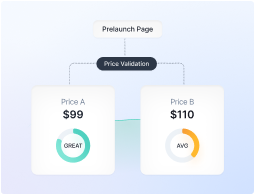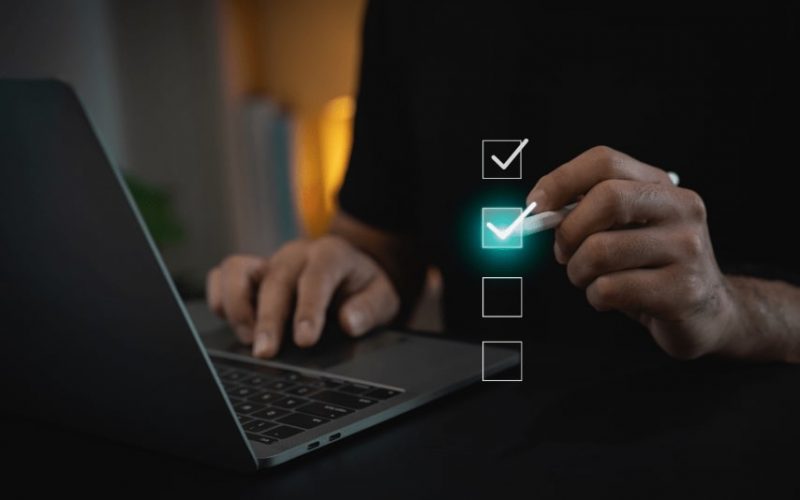Setting the perfect price for your product or service can feel like walking a tightrope. Too high, and you risk scaring away potential customers. Too low, and you’re leaving money on the table. But what if there was a way to find that sweet spot where profits soar and customers still feel they’re getting great value? Enter price testing – the secret weapon of successful businesses. This comprehensive guide will walk you through everything you need to know about price testing, from basic concepts to advanced strategies. Ready to unlock the power of smart pricing? Let’s dive in!
What Is Price Testing?
Price testing is a methodical approach to determining the optimal price point for a product or service. It involves systematically varying prices and analyzing consumer responses to find the perfect balance between customer satisfaction and revenue generation. By conducting price testing, businesses can make data-driven decisions about their pricing strategies, ultimately leading to increased profitability and market competitiveness.
Why Is Price Testing Important?
Price testing is crucial for several reasons:
Maximizes Revenue
Finding the right price point ensures you’re not leaving money on the table or pricing yourself out of the market.
Informs Market Positioning
The price you set communicates your product’s value and affects brand perception.
Reduces Risk
Especially for new products, price testing helps avoid costly missteps in pricing strategy.
Adapts to Market Changes
Regular price testing allows businesses to stay responsive to shifting market conditions and consumer preferences.
Optimizes Resource Allocation
For physical products, proper pricing helps manage inventory and production costs effectively.
By engaging in price testing, businesses can fine-tune their pricing strategies to align with market demands and internal goals, leading to improved financial performance and customer satisfaction.
Common Price Testing Methods
Several methods can be employed for effective price testing:
Surveys
Directly engage with your target audience to gather insights on their willingness to pay and perceived value of your product.
Price Laddering
Present a range of price options to identify thresholds where consumers perceive a product as too expensive or too cheap.
Competitor Analysis
Monitor and analyze competitors’ pricing strategies to benchmark your own prices.
A/B Testing
Present different prices to different customer segments and analyze their responses.
💡 Pro Tip: A/B testing works best when done with actual purchase intent. With Prelaunch’s Price Testing, you can test multiple price points across different audience segments and get real buyer data, not just opinions.
Conjoint Analysis
Assess how various product attributes, including price, influence purchasing decisions.
Van Westendorp’s Price Sensitivity Meter
This method asks consumers four price-related questions to determine an acceptable price range.
Each method has its strengths, and often a combination of approaches yields the most comprehensive insights.
Step-by-Step Guide to Conducting Price Testing
1. Define Your Objectives:
- Clearly outline what you want to achieve with your price testing.
- Examples of objectives:
- Find the price that maximizes revenue
- Determine price elasticity of demand for your product
- Identify the perceived value of your product in the market
- Make sure your objectives are SMART: Specific, Measurable, Achievable, Relevant, and Time-bound.
2. Choose Your Method:
- Select the price testing method(s) that best suit your product and market.
- Consider factors like:
- Your product type (physical, digital, service)
- Your target market
- Available resources (time, budget, personnel)
- You may choose to combine methods for more comprehensive insights.
4. Identify Your Target Audience:
- Ensure your test participants represent your actual customer base.
- Consider segmenting your audience based on:
- Demographics (age, gender, income)
- Psychographics (lifestyle, values, interests)
- Behavioral patterns (purchasing habits, brand loyalty)
- Use tools like customer surveys or market research data to refine your audience selection.
5. Prepare Your Test:
- Design your survey, set up your A/B test, or prepare your conjoint analysis scenarios.
- For surveys:
- Craft clear, unbiased questions
- Use a mix of question types (multiple choice, Likert scale, open-ended)
- Conduct a survey with a small group to identify any issues
- For A/B tests:
- Decide on your test variables (price points to compare)
- Set up your testing platform or website to randomly assign visitors to different price groups
- For conjoint analysis:
- Identify the key attributes of your product, including price
- Create product profiles with different combinations of these attributes
6. Conduct the Test:
- Implement your chosen method, ensuring you’re collecting accurate and comprehensive data.
- Set a specific timeframe for your test, considering factors like:
- Your sales cycle
- Seasonal variations in your market
- The number of participants needed for statistical significance
- Monitor the test closely to catch any technical issues or unexpected patterns.
7. Analyze the Results:
- Use statistical analysis to interpret your data and draw meaningful conclusions.
- Look for patterns and trends in the data, such as:
- Price points where demand significantly changes
- Differences in price sensitivity among customer segments
- Correlations between price and other factors (e.g., perceived quality)
- Consider using tools like regression analysis or demand curve modeling for deeper insights.
8. Implement and Monitor:
- Apply your findings to your pricing strategy and continually monitor the results.
- Implement changes gradually if possible, to minimize risk
- Set up systems to track key metrics like:
- Sales volume
- Revenue
- Customer acquisition cost
- Customer lifetime value
9. Iterate:
- Price testing should be an ongoing process. Regularly revisit and refine your approach.
- Schedule regular reviews of your pricing strategy (e.g., quarterly or bi-annually)
- Stay informed about market changes, competitor actions, and economic factors that might necessitate new rounds of price testing.
A/B Testing Tips for Price Testing
Test One Variable at a Time
To isolate the impact of price changes, keep all other factors constant. This is really important in all aspects of market validation, but especially here. It includes product features, marketing messages, website design, and promotional offers. If you need to test multiple variables, consider using multivariate testing, but be aware this requires larger sample sizes and more complex analysis.
Use Statistically Significant Sample Sizes
Ensure your test groups are large enough to provide reliable results. Use a sample size calculator to determine the number of participants needed for your desired confidence level and margin of error. Generally, aim for at least 100 conversions per variation, but this can vary based on your specific circumstances.
Run Tests for an Appropriate Duration
Allow enough time for meaningful patterns to emerge, but not so long that market conditions change significantly. Consider factors like your average sales cycle, weekly or monthly fluctuations in your business, and the time needed to reach your required sample size. A good rule of thumb is to run the test for at least one full business cycle, and until you’ve reached statistical significance.
Consider Segmentation
Different customer segments may respond differently to price changes. Test across various segments for more nuanced insights. Segmentation factors might include new vs. returning customers, geographic location, customer lifetime value, and acquisition channel. Analyze results both in aggregate and by segment to uncover valuable insights.
Monitor More than Just Sales
Look at metrics like conversion rates, average order value, and customer lifetime value. Other important metrics to consider include cart abandonment rate, time to purchase, customer satisfaction scores, and repeat purchase rate. These additional metrics can provide context and help you understand the full impact of price changes.
Use Robust Price Testing Tools
Leverage platforms designed for A/B testing to ensure accurate data collection and analysis. Popular tools include Optimizely, VWO (Visual Website Optimizer), Google Optimize, and AB Tasty. These tools often provide features like easy test setup and management, real-time results tracking, statistical significance calculators, and segmentation capabilities.
Control for External Factors
Be aware of any external events or changes that might influence your test results. This could include marketing campaigns, seasonal trends, competitor actions, and economic changes. Document any such factors and consider their potential impact when analyzing your results.
Test Price Presentation, Not Just Price Points
Consider testing different ways of presenting your prices, such as with or without decimal points, rounded vs. non-rounded numbers, including or excluding currency symbols, and displaying savings or discounts differently. These subtle changes can sometimes have significant impacts on perceived value and purchasing decisions.
5 Things to Avoid When Price Testing
Ignoring External Factors
Be aware of seasonal trends, competitor actions, or economic conditions that might skew your results. Common external factors to watch for include holiday seasons or other cyclical demand patterns, major industry events or announcements, changes in regulations or taxes affecting your product, and significant shifts in supply chain or production costs. Keep a log of external events during your testing period to help contextualize your results.
Overrelying on a Single Method
Combine multiple testing methods for a more comprehensive understanding. For example, use surveys to gauge initial price sensitivity, follow up with A/B testing to validate findings in real-world conditions, and employ conjoint analysis to understand how price interacts with other product attributes. Cross-reference results from different methods to identify consistencies and discrepancies.
Neglecting Customer Feedback
Don’t focus solely on quantitative data. Qualitative feedback can provide valuable context. Ways to gather qualitative feedback include follow-up surveys with open-ended questions, customer interviews or focus groups, analysis of customer service interactions, and social media listening. Use this feedback to understand the “why” behind your quantitative results.
Testing Too Narrow a Price Range
Be bold in your testing. A wider range can reveal unexpected insights. Consider testing prices that seem “too high” or “too low” – you might be surprised by the results. However, balance this with maintaining brand integrity and avoiding permanent damage to customer perceptions.
Forgetting About Perceived Value
Remember that price is just one part of the value equation. Consider how changes in price affect perceived value. Factors influencing perceived value include brand reputation, product quality and features, customer service and support, and warranty or guarantee offerings. Consider testing different value propositions alongside price changes to find the optimal combination.
Conclusion
Price testing is an indispensable tool for businesses looking to optimize their pricing strategies. By systematically evaluating different price points and their impact on consumer behavior, companies can make informed decisions that balance profitability with market competitiveness. Remember, price testing is not a one-time event but an ongoing process of refinement and adaptation.
Whether you’re launching a new product, entering a new market, or simply looking to stay competitive, incorporating price testing into your business strategy can provide the insights you need to succeed. So, don’t leave your pricing to chance – start testing and start optimizing!
FAQs
How long should a price test run?
The duration of a price test can vary depending on factors such as your sales cycle, product type, and market conditions. Generally, it should run long enough to gather statistically significant data, which could be anywhere from a few weeks to several months.
What’s the difference between price testing and A/B testing?
While A/B testing is a method that can be used for price testing, it’s not limited to pricing. A/B testing can be used to test various elements of a product or marketing strategy, while price testing specifically focuses on determining the optimal price point.
How much data do you need for accurate price testing?
The amount of data needed depends on your specific circumstances, but generally, you want enough data to achieve statistical significance. This could mean hundreds or even thousands of data points, depending on your market size and the complexity of your pricing structure.
Can price testing be used for subscription-based products?
Absolutely! Price testing is particularly valuable for subscription-based products. You can test different price points, tiers, and even pricing models (e.g., monthly vs. annual subscriptions) to find the optimal strategy for customer acquisition and retention.




